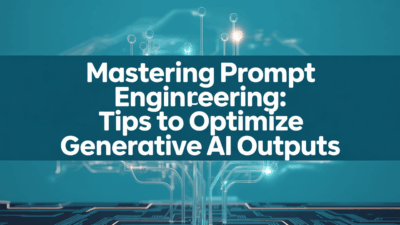In the evolving landscape of e-learning, educators and instructional designers are continually seeking innovative ways to enhance student engagement and assess learning effectively. One of the most promising advancements in this domain is the integration of Generative AI into the creation of dynamic assessments. By leveraging artificial intelligence, educators can develop personalized, adaptive, and highly interactive evaluation tools that not only measure knowledge retention but also support deeper learning outcomes.
What Is Generative AI?
Generative AI refers to a class of artificial intelligence systems capable of generating new content—such as text, images, or even code—based on patterns learned from existing data. In the context of e-learning, these systems can be trained on educational materials to produce quizzes, tests, and other forms of assessment tailored to specific learning objectives .
The Role of Generative AI in E-Learning Assessments
Traditionally, creating assessments has been a time-consuming process requiring manual effort from educators. However, with the rise of generative AI tools, this process can be significantly streamlined. These tools can generate multiple versions of questions, adapt difficulty levels based on learner performance, and provide instant feedback—all while reducing the workload for instructors .
1. Automated Question Generation
One of the most impactful applications of generative AI in e-learning is automated question generation. By analyzing course content, such as lecture notes or textbooks, AI models can create a wide range of quiz and test questions. This includes multiple-choice, short-answer, and even scenario-based questions that challenge critical thinking skills .
2. Personalized Learning Paths
Generative AI enables the creation of adaptive assessments that adjust in real-time based on individual learner responses. If a student struggles with a particular concept, the system can generate additional practice questions or suggest supplementary resources. This level of personalization enhances the learning journey and drives continuous improvement .
3. Instant Feedback and Analytics
Another major advantage of using generative AI in assessments is the ability to deliver immediate, actionable feedback. Students no longer have to wait for instructors to grade their work; instead, they receive instant results along with explanations of correct answers. This timely feedback loop supports self-paced learning and encourages students to reflect on their progress .
Practical Implementation: A Step-by-Step Approach
To harness the full potential of generative AI in e-learning assessments, institutions and educators should follow a structured implementation strategy:
Step 1: Define Learning Objectives
Before deploying AI-generated assessments, it’s essential to clearly outline the learning goals and competencies you wish to evaluate. This ensures that the generated content aligns with your curriculum and pedagogical approach .
Step 2: Select the Right Tools
Choose AI platforms that offer robust customization options, support various question types, and integrate seamlessly with your existing LMS (Learning Management System). Some EdTech start-ups are already offering AI-driven assessment tools with impressive capabilities .
Step 3: Pilot and Refine
Begin with a pilot program to test the effectiveness of AI-generated assessments. Gather feedback from both students and instructors to refine question formats, difficulty levels, and overall user experience .
Step 4: Monitor and Iterate
Once deployed at scale, continuously monitor performance metrics such as completion rates, accuracy, and engagement levels. Use this data to fine-tune the AI model and ensure assessments remain aligned with evolving educational standards .
Challenges and Considerations
While generative AI offers numerous benefits, there are also challenges to consider. Ensuring the fairness and accuracy of AI-generated questions is crucial. Additionally, over-reliance on automation may reduce opportunities for human interaction and nuanced evaluation. Therefore, a balanced approach that combines AI efficiency with instructor oversight is recommended .
Conclusion
Generative AI is revolutionizing the way assessments are created and delivered in e-learning environments. From automating question generation to enabling personalized feedback loops, this technology empowers educators to focus more on mentoring and less on administrative tasks. As AI continues to evolve, its role in shaping dynamic, responsive, and learner-centric assessment strategies will only grow stronger .
